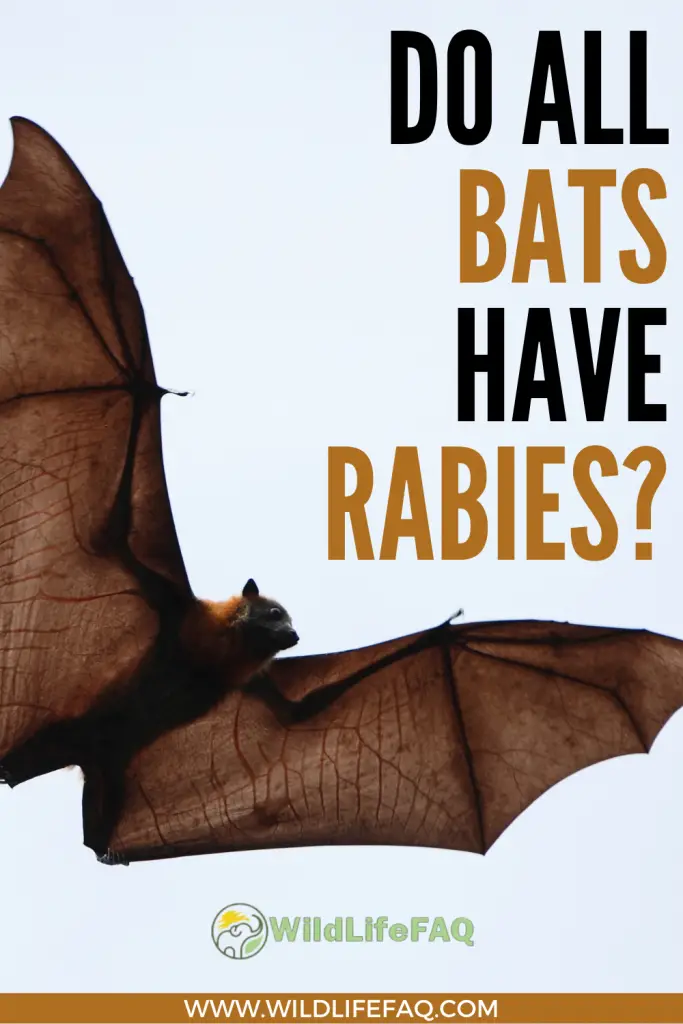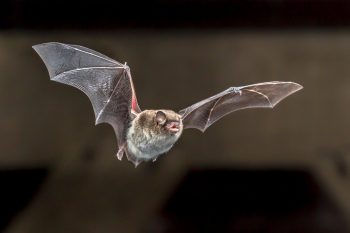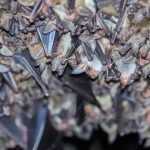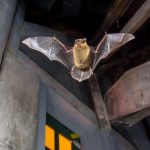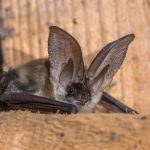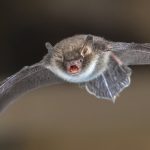Yes, bats can actually catch rabies. However, that doesn’t mean that all bats DO actually have rabies.
Only about 6% of all tested bats were actually found to have rabies
Why Do All Bats Have Rabies?
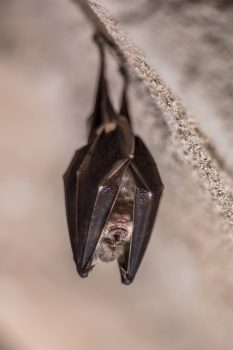
Even though rabies is endemic (found) in the US – only about 6% of all tested bats were actually found to have rabies. That is a tiny fraction considering how much bats and rabies get talked about in the same sentence.
And rest assured – if ALL bats had rabies – a known fatal human disease – then there would be very strict safety control programs in place across the globe.
There are literally millions of bats in the world so this would be an epic undertaking. One that I am sure we would all already know about.
But they don’t, thankfully. And some countries – like the UK – don’t actually have rabies at all in their bat populations – so don’t even need to worry about that 6% even.
So, the huge majority of bats don’t have rabies at all.
What Causes Rabies In Bats?
Just like with all mammals – bats catch rabies from another infected animal. They don’t have to catch it from another bat.
Rabies is a viral disease that is passed between an infected host and another animal through saliva (usually because of a bite). It can also be passed on through scratches and ingestion of infected animal tissue – although these are rare.
Once an infected host has enough of the virus they will start to show symptoms of the disease. As rabies affects the brain – it causes a variety of symptoms including confusion, agitation, paralysis, aggression, and hallucinations. Aggression is a symptom that actually increases the chances of it being passed on – as an aggressive animal is more likely to bite other animals.
Not many animals will bite a bat though – so how do they catch it in the first place?
Well, bats often squabble in the roost – trying to get the best roosting spot. Also, a lot of bats (which are carnivores) actively hunt out other bats for food – so a failed attack from an infected bat could likely infect the victim.
What Does A Bat With Rabies Look Like?
Bats are quite resistant to a lot of pathogens that would make other similar-sized animals quite unwell. But due to the potential of this virus to affect the brain and nervous system – looking out for symptoms that affect mobility is the best thing. Often bats with rabies can’t fly properly.
So a bat on the ground; who flew into a wall; who doesn’t avoid humans, etc.
All the things you wouldn’t normally see a bat doing. They are also reported to have a ‘stare’ that looks unnatural. Bats trapped in the house will be confused anyway in the panic – so their actions can be misinterpreted.
If anyone gets scratched or bitten by a bat – even if it is flying normally – they should seek medical advice immediately. Treatment for rabies must begin BEFORE symptoms – once symptoms are seen in a human there is no successful treatment available. Rabies from bat bites is the main source of rabies disease in humans as many people think all bats are aggressive and so often ignore bites.
You can also read our article on “What To Do If A Bat Touches You.”
Can I Catch Rabies From Touching A Bat?
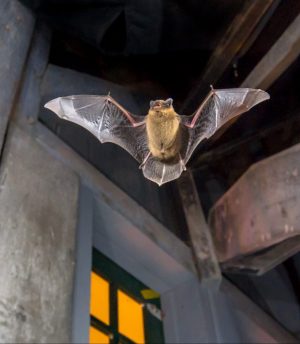
The ONLY way you can catch rabies from a bat is to have made contact with it. If you never touch a bat – you will most likely never catch rabies from one. Rabies can only spread through a bite from an infected bat – and so unless you are really unlucky – you won’t ever get bit.
If you wake up with a bat in your room or your house – always check yourself and your children and pets thoroughly in case they were bitten or scratched while they slept.
Often bat bites go unnoticed by sleeping humans – and are rarely reported by children who usually ignore scratches and scrapes. A large number of rabies fatalities around the world have been undiagnosed child bites.
There are many improvements to your home that will reduce the chances of bats getting in, and there is never any need to handle a bat yourself. There are professional bat handlers and wildlife specialists who will do this for you safely – and at no risk to yourself.
